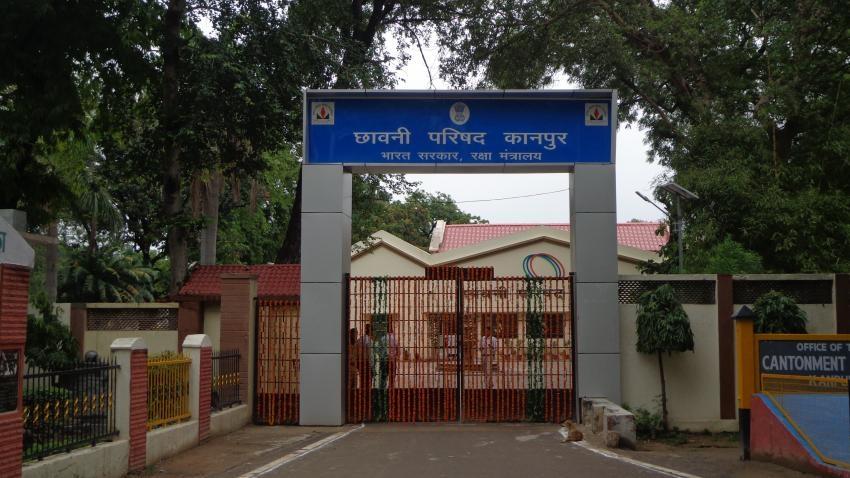Will the Proposal to Hand Over Civilian Areas in Cantonments Benefit the Land Mafia?

Image Used For Representation Purpose Only
According to a report the army is considering handing over civilian areas within cantonments over to municipal authorities while retaining control over the military installations. Major Priyadarshi Chowdhury SC (Retd.) has called it a good move that if gets implemented will resolve all issues surrounding cantonments forever. The reason for his view is that apart from handing over the civilian installations to municipal authorities, some of the other recommendations are to abolish the Directorate General of Defence Estates (DGDE) as well as the Cantonment Boards. Major Chowdhury has been a vocal critic of the move to open all the roads in cantonments to the general public due to the existence of military infrastructure such as ammunition dumps and firing ranges inside cantonments. He has also been vocal on the demand of one rank one pension (OROP).
Also Read: Is Real Estate the Real Motive Behind the Opening of Cantonment Roads?
However, there is a concern that the proposal is geared towards enabling the land mafia to expand into the newly 'freed-up' land. According to the DGDE website, the Ministry of Defence owns around 17.54 lakh acres of land, out of which approximately 1.57 lakh acres are located within the 62 existing cantonments. The history of the cantonments in India has shown that the cantonments were originally located outside cities and away from civilians. As cities expanded, they began to grow around the existing cantonments. Thus, cantonments, over time due to a burgeoning urban population, ended up being located within cities. However, since the land remained vested with the government, the entry into the cantonments remained relatively restricted to non-military persons. Thus, the cantonments ended up becoming oases of space and greenery in an increasingly crowded urban India.
Also Read: Incompetence or Impropriety?
What this points towards is that the land which falls under the control of cantonment boards and the DGDE is in fact prime real estate for a land starved urban India. On June 18, days after the cantonment roads were thrown open to the public, the Hyderabad edition of The Times of India reported that “[a]s roads in Cantonment[s] open, real estate rides a wave of hope”. If the proposal is accepted and the civilian areas are handed over to the municipal authorities, one would have to wait and see whether the real estate sector will ride another wave of hope.
Also Read:Cantonment Roads: Two Wrongs Do Not Make a Right
The DGDE has been in the fire of the Comptroller and Auditor General's (CAG) cross hairs for a while. The CAG in numerous reports has lambasted the DGDE for mismanagement of leases in several instances the lease amount was far below the market value of the property. The DGDE was also accused of allowing commercial establishments to be set up on land under its charge. Thus, the idea that the DGDE was conniving with the land mafia is not unfounded.
Also Read: Does Nirmala Sitharaman Have a Personal Interest in Opening Cantonment Roads?
Military circles are divided on the proposal. One segment has raised concerns over security. The same concern was raised over the decision to open the cantonment roads to the public. The reason behind this concern is quite easy to understand, the Indian Army has been deployed for 'counter-insurgency' operations in various places within the country. It is also no secret that excesses have been committed under the varying versions of the Armed Forces (Special Powers) Acts (AFSPA). In this light it is not implausible that there may be some who would take advantage of the relaxed security to exact 'revenge'.
Another objection comes from those in the DGDE and the Cantonment Boards. A WhatsApp forward doing the rounds on 'fauji' groups has highlighted that the current proposal is not the first time such a move had been mooted. In 1948, a committee headed by SK Patil, had recommended that large areas of Ambala Cantonment along with seventeen other cantonments be merged with local Municipal Corporations. Accordingly, partial civilian areas in six cantonments located in Agra, Ahmedabad, Allahabad, Banaras, Delhi and Jhansi were excised.
Between 1956 and 1957, the Estimates Committee of the Parliament under Balwant Rai Mehta had recommended abolition of cantonments and their conversion to pure military stations. Later between 1998 and 1999, the Standing Parliamentary Committee on Defence of the 12th Lok Sabha was of the opinion that using defence funds and land for civilians should be a 'relic of the past'. The committee also advocated that the Cantonments Act should be allowed to fade with time, while recommending that cantonments should be converted into military stations.
In 2014, the Public Accounts Committee in their 89th report passed adverse comments on the functioning of cantonments. They highlighted the mismanagement of leases and unauthorised construction which were piling losses to the State. The Committee stated that if the leases are properly managed and expired leases are terminated, the Government can earn a lot of revenue and land for Army infrastructure.
In 2015, a study team chaired by the Defence Secretary was constituted to discuss the ‘Relevance of Cantonments in India’. The team identified six cantonments for excision, Mhow, Lucknow, Almora, Ahmednagar, Ferozepur and Yol. The process has already commenced in Yol.
The members of the armed forces who are in favour of the proposal have cited two reasons in its favour. The first is that the funds that were previously being utilised for maintaining the civilian areas of cantonments can then be used for defence procurements. The second reason is that there will be a clear demarcation of duties. This will ensure that the military stations will be managed solely by the military, and their duties will not extend to the civilian areas. This was a major point of friction after the cantonment roads were opened as the orders put military authorities on traffic management as a part of their other duties. If the proposal is adopted, then this will be one less burden for the military authorities.
On one hand there is a section within the armed forces who are in favour of the proposal since maintaining civilian living spaces and roads should not be the job of the army. However, on the other hand, there is a danger that the land, instead of housing those who most need dignified accommodation, will instead be used to set up gated communities. Thus, while the armed forces are elated, the civilian population needs to be ever vigilant of the direction this proposal takes.
Get the latest reports & analysis with people's perspective on Protests, movements & deep analytical videos, discussions of the current affairs in your Telegram app. Subscribe to NewsClick's Telegram channel & get Real-Time updates on stories, as they get published on our website.























